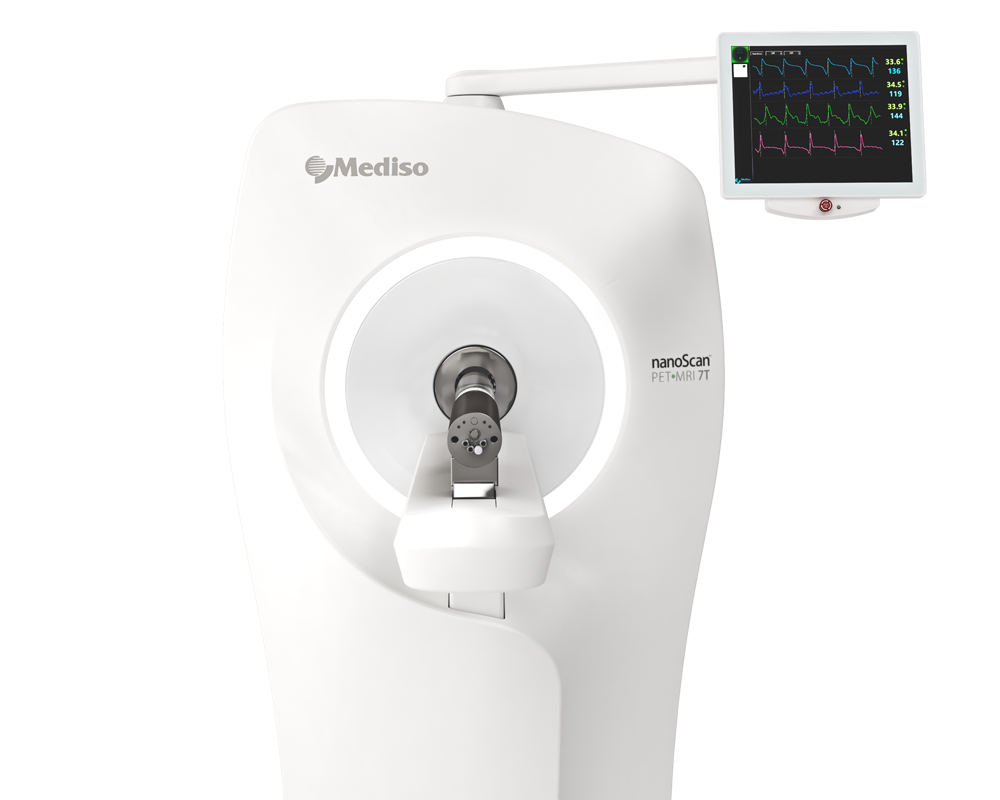Longitudinal evaluation of five nasopharyngeal carcinoma animal models on the microPET/MR platform
2021.10.05.
Jingjing Shi et al., Preprint, 2021
Summary
Nasopharyngeal carcinoma (NPC) is one of the most prevalent malignant diseases among the population in East and Southeast Asia. In order to enable rapid translation of novel cancer drugs from discovery to clinical trial evaluation, the potential of microPET/MR in small animal imaging is of interest for early in vivo testing of these drugs and for performing co-clinical trials. To better understand the underlying pathogenesis of the disease as well as to develop novel treatment strategies, patient-derived xenografts (PDXs) have been used as important models in pre-clinical studies. In NPC research, XenoC15 and XenoC17 represent the most widely used PDXs and the other two available PDXs are Xeno2117 and Xeno666. These have been passaged for over 25 years and are expected to have already lost their original genetic and pathological properties. Among the conventional NPC cell lines that have been available in the past decade, only C666-1 is able to be more representative of clinical NPC. In recent years, several new NPC xenografts and cell lines were established for investigation: C17, Xeno76, Xeno23, NPC43; but the longitudinal growth pattern and the metabolic characteristics of them still remain unknown.
The aim of the present study was to longitudinally evaluate the tumour growth and metabolic activity of two well-established NPC animal models (C666-1, C17) and three novel models (Xeno76, Xeno23 and NPC43) using nanoScan PET/MRI 3T system. Mice injected with 18F-FDG were imaged twice a week for consecutive 3–7 weeks. 18F-FDG uptake was quantified by standardized uptake value (SUV) and presented as SUVmean tumour-to-liver ratio (SUVRmean). SUVRmean and histological characteristics were compared across the five NPC models. Analysis revealed variable tumour growth and metabolic patterns across different NPC tumour types. C17 has an optimal growth rate and higher tumour metabolic activity compared with C666-1. C666-1 has a fast growth rate but is low in SUVRmean at endpoint due to necrosis as confirmed by hematoxylin & eosin staining. NPC43 and Xeno76 have relatively slow growth rates and are low in SUVRmean, due to severe necrosis. Xeno23 has the slowest growth rate, and a relative high SUVRmean. This study establishes an imaging platform that characterizes the growth and metabolic patterns of different NPC models, and the platform is well able to demonstrate drug treatment outcome supporting its use in novel drug discovery and evaluation for NPC.
Results from nanoScan PET/MRI 3T
Tumour cells were injected subcutaneously into the right loin of each NOD.CB17-Prkdcscid/J mouse (male, 4-5 weeks old, n = 5 for each model). Mice were randomized into drug treatment group (weekly ip injection of 4 mg/kg Cisplatin) or vehicle group when tumours reached 50-100 mm3.
After cancer cells injection or tumour fragment implantation, nanoScan PET/MRI monitoring commenced when the tumour was palpable on each mouse. Mice were fasted overnight with free access to water before nanoScan PET/MRI scans. 9.25 ± 0.37 MBq 18F-FDG was injected via lateral tail vein. Animals were scanned twice a week for consecutive 3-7 weeks. T1 and T2 weighted imaging (T1WI and T2WI) were performed on all the mice for tumour size assessment, A 20-minute static PET scan was performed 60 minutes after injection of radiotracer. For drug treatment assessment, 18F-FDG PET scan was performed pre- and post-treatment for tumour uptake comparison. Images were analysed with InterViewFusion software: Volume of interests (VOIs) of liver and tumour were manually drawn on the images, 18F-FDG uptake was quantified by standardized uptake value (SUV). For comparable analysis, the hepatic 18F-FDG uptake was used as an internal reference background for VOI quantification. The tumour SUVmax and SUVmean were normalized by SUVmean_liver and presented as SUVmax_ratio (SUVRmax) and SUVmean_ratio (SUVRmean).
Results show
- First of all, the repeatability of the nanoScan PET/MRI system was tested: The glucose uptake of liver in mice was reported stable upon fasting condition in several studies and SUVmean_liver has been used as the background to normalize radiotracer accumulation. Thus, SUVmean_liver was used here to examine the repeatability of the nanoScan PET/MRI imaging system. Initial liver uptake and endpoint liver uptake for all five mice models were analysed and a total of 50 data points were included in the analysis. Bland-Altman plot showed mean difference between the two timepoints was 0.0196 (95% limit of agreement: -0.099 - 0.14). Coefficient of variation (CoV) for SUVmean_liver between the initial and endpoint was 6.95% ± 5.02%. All the data points were within the agreement interval. No significant differences were observed between the initial and endpoint liver uptake. Results show an excellent consistency of liver SUVmean, suggesting the microPET/MR imaging system is stable and able to produce repeatable results.

- Monitoring the longitudinal changes in tumour uptake revealed highly variable tumour metabolic patterns across tumour types: C17 has an optimal growth rate, high SUVRmean, and little necrosis. C666-1 has a fast growth rate, low SUVRmean and much necrosis. NPC43 and Xeno76 have slow growth rates and also low SUVRmean, as well as extensive necrosis. Xeno23 has the slowest growth rate among these models, but it has a high SUVRmean.
- To compare PET images and autoradiography with H&E staining, tumour was extracted at the endpoint and tumour slices went through histological analysis. The low uptake region shown on the PET images and autoradiography image was confirmed to be necrotic region by H&E staining.
- Strong positive correlation was found between SUVRmean and the area of the non-necrotic region
- Standard chemotherapy with cisplatin was applied on C17 as the optimal tumour model for our purpose due to the satisfactory growth rate and high tumour metabolic activity. 4 mg/kg cisplatin was administered for consecutive 4 weeks. Results show siginificant tumour inhibition. Statistical analysis showed significant differences in tumour volume and SUVmean between treatment group and vehicle group. Immunohistochemistry staining also confirmed the results.

Wie können wir Ihnen behilflich sein?
Bitte kontaktieren Sie uns für technische Informationen und Unterstützung jeglicher Art in Zusammenhang mit unseren Entwicklungen und Produkten.
Kontaktformular
